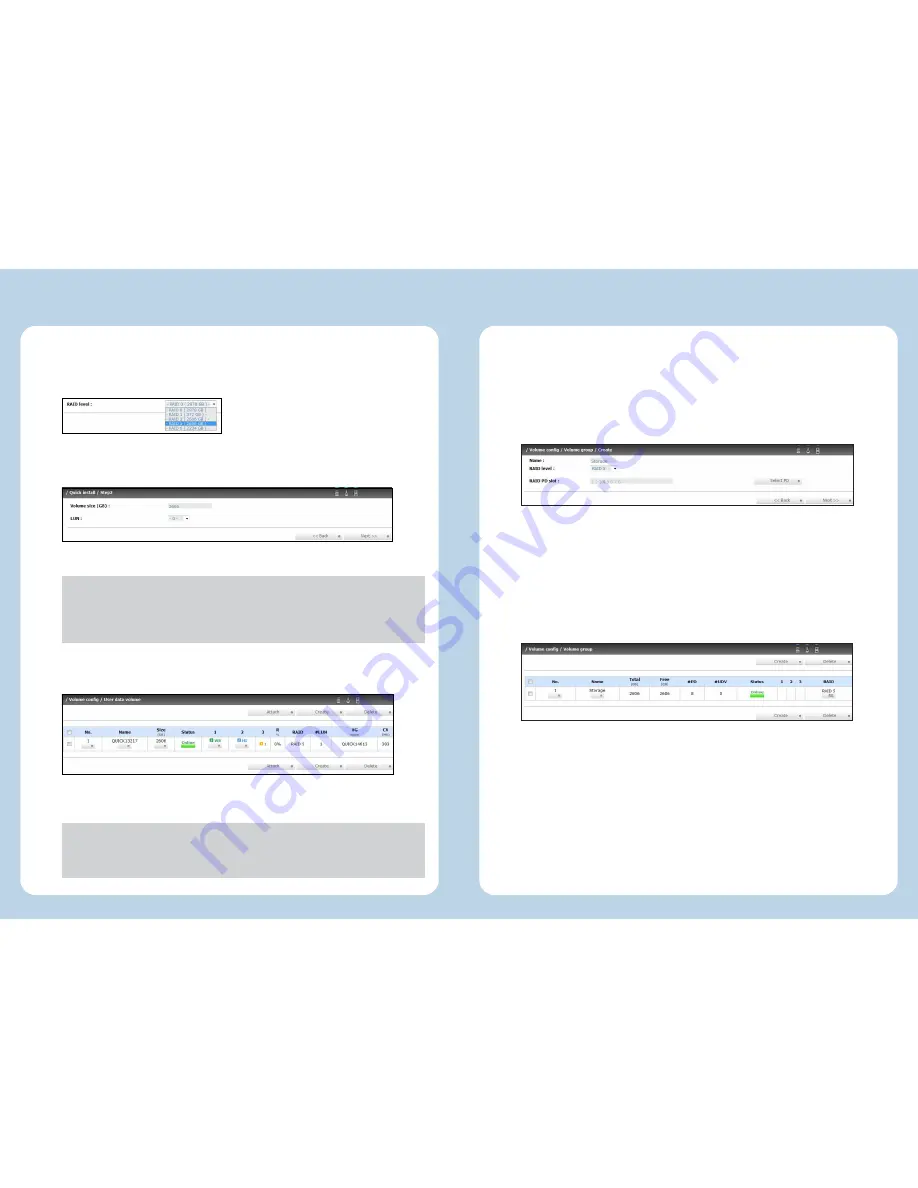
Part I: Use “Quick Install”
Select
Quick install
, and choose
RAID level
from the drop-down list. Click
Next
.
1.
(Figure: the maximum volume size is 2606GB, and 1 LUN (No. 0) is attached.)
(Figure: a RAID 5 user data volume with the UDV name “QUICK13217”, named by the
system itself, with the total available volume size 2606GB, and attached with 1 LUN.)
Click
Confirm
if all setups are correct. Then a page with the “User data volume” is
created.
Note:
The UDV (user data volume) created by “Quick Install” is accessible by
every host. Access control of host would show as a wildcard “*”. To see and
modify the volume, select
\ Volume config \ Logical unit
.
Note:
If using OS such as Windows XP, Windows 2000 or Windows Vista 32
bits, click
Cancel
when this warning message pops up "
LBA 64 Support?
Choose Cancel. It will change the sector size to 4K. The maximum capacity is
up to 16 TB. This volume can not be Dynamic Disk.
"
3.
Part II: Create an independent volume for each host
In this example, three UDVs (user data volume) are created in one VG, and assigned for
three different hosts DVR system, Video Server and Compact DVR for data storage.
Create VG (Volume Group).
1.
Select
/ Volume config / Volume group
.
Click
Create
.
Type a VG Name, select a RAID level, press
Select PD
to choose the RAID
PD slot(s), and then press
Next
.
Check the outcome. Press
Confirm
if all setups are correct.
A VG has been created.
(Figure: Create a RAID 5 with 8 physical disks, named “Storage”. The total size is
2606GB. Because of no related UDV there, free size still remains 2606GB.)
a.
b.
c.
d.
e.
Type
Volume size
and select a
LUN
number. By default, the maximum volume size
is shown. Click
Next
.
2.









